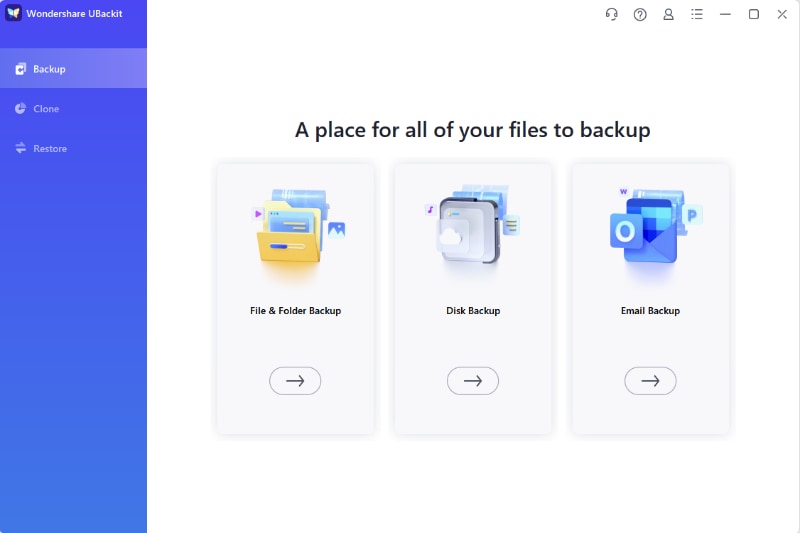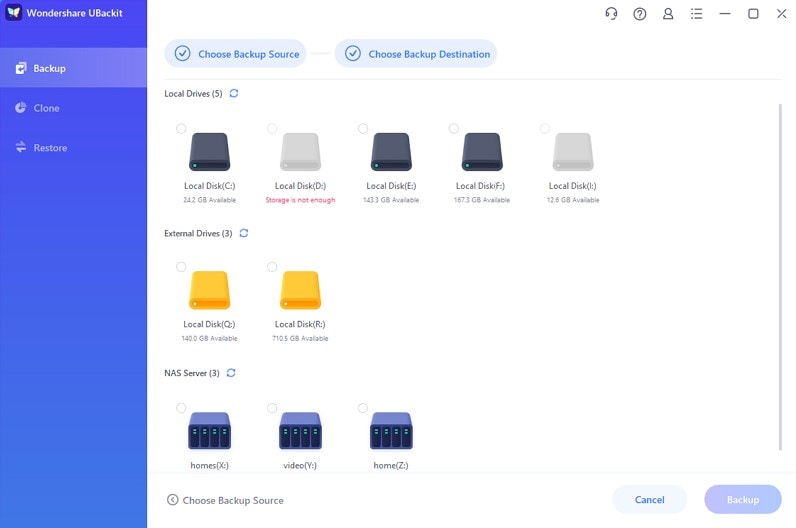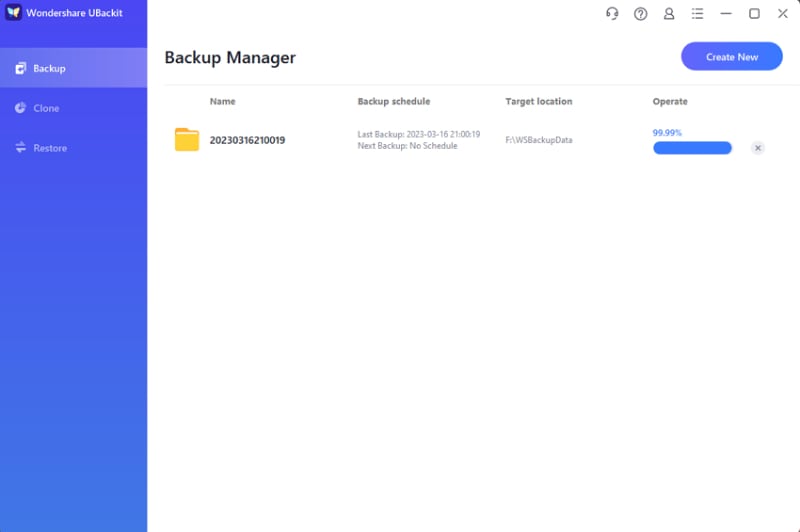Further Read:
How to Backup Data with USB Image Tool
Flash Drive - What Size of USB Flash Drive Do You Need
All You Need to Know About The Different Types of USB Flash Drive
Free Flash Drive Data Recovery: Recover Files from USB Flash Drives within Steps
Dec 12, 2025 • Filed to: Take Data Backup • Proven solutions
In this advanced computerized era, there is nothing reliable even advanced technology. Similar to the storage devices, an uncertain situation could happen at any time without any indications. As a computer user, data loss is one of the uncertain situations that occasionally occur especially on Windows OS. The data loss mainly happens due to system crash, hard drive failure, unknown virus, or any other issue. To avoid such a thing, it is always recommended by experts to take proper backup of your data regularly. But do you know how to back up the computer to flash drive? Well, this post is dedicated to you. In this post, we will give you the best solution to your question "How do I backup to a flash drive". Moreover, you will also find the easiest way to the backup computer to a USB flash drive using the best backup and restore software. Now, without further ado, let's get started.
Join us to celebrate World Backup Day. Let's take the pledge, and make data backups a regular part of your day. As you try to backup computer to a USB flash drive, you must realize the importance of data backup.
Part 1. What Is USB Flash Drive?
A USB Flash drive is a small portable storage device used to store and read data like photos, videos, documents, audio, archive, etc. The USB flash drive is designed typically smaller as compared to HDD, Optical disk, and other typical storage devices due to flexibility and portability. You can connect the USB flash drive to other devices or computers through Type A plug. With the advent of technology and innovation, you will also find flash drives like OTG with micro USB or Type-C plug, mainly designed for mobile devices.
Types of USB Flash Drives
- Security Flash Drive: Unlike Normal USB flash drive, it is strengthened with physical or intelligent security approaches to guarantee that the information isn't imperiled. Moreover, these flash drives are also used as a password for the specific account. Simply plug it to the device to sign in to your account without entering a password.
- Music Flash Drive: If you are a music lover, you may love this flash drive. These flash drives allow you to store music and video files on it.
- OTG Flash drive: OTG aka On the Go flash drives is the latest USB flash drive type. OTG could be based on micro USB, Type-C, or lightning plug. You can directly connect the flash drive to your mobile phone.
Functions of USB Flash Drive
- Store data: Most people use USB Flash drive to store data such as a document, photos, videos, audio, games, executable file, and many more.
- Transfer: The major function of the USB flash drive is to transfer any type of stored data from one device to another by plugging it into the computer.
- Backup data: You can also use the USB flash drive as a backup storage device. As we said earlier, data loss can happen at any time. You can make a backup of important files on the USB flash drive using the USB backup tool to protect it from the uncertain situation.

Part 2. How to Backup Computer to Flash Drive in Windows?
Way 1. Windows Backup and Restore Feature
Like any other operating system, Windows also offers integrated backup and restore function. By using this function, you can take the backup of data to protect it from harmful threats and uncertain situations. Want to know how to backup computer files on CD or USB flash drive? Follow the below guide.
- At the very first step, you have to click on the "Start" button and search for the control panel.

- On the control panel, you will find lots of options, click on the "Backup your computer" underneath the System and Security category.

- Now, plug your USB Flash drive to your computer and make sure it is working and have enough space to store the backup files. If there is insufficient storage available, you first need to format the drive.

- On the Backup and Restore interface, click on the "Set up back" and you will be promoted. Click on the "Yes" to allow changes to the system.
- After that, "Set up backup" wizard will appear. Choose the drive on which you would like to save the backup. Simply choose the USB flash drive and hit on the "Next" button.

- Now, choose what you would like to backup. Click on the "Let me choose" to manually choose a folder for backup or chose the recommended one and again hit on the "Next" button.

- Review your backup settings and schedule. You can change it if you want and click on the "Save Settings and exit" button.
- You are now ready to back up the selected files or folder, simply click on the "Back up now" to start the backup process. The backup process will take a couple of minutes depending on the type of data.
Recommended: Wondershare UBackit - Backup Windows
When we talk about backing up the data using the Windows default method, it has loads of limitations. To overwhelm, you can try tools like Wondershare UBackit Data Backup. It is a third party tool powered by loads of amazing and great functions that make backup and restore process easier like never before. Getting engaging with this amazing tool, you can back up the Windows operating system, photos, videos, document, executable files, and many others. There is no need for any extra technical knowledge if you want to access this tool. Has a query about computer backup to flash drive in Windows using UBackit? Follow the guide to back up your computer files to USB flash drive using the backup software.
Step 1. Download and Install UBackit
First of all, free download Wondershare UBackit to your computer. Once the download process is completed, open the setup file to install it on your computer. After the successful download and installation process, you have to open the UBackit tool.
Step 2. Choose Backup
Wondershare UBackit interface will appear, click on the "Backup" menu option at the left pane. Now, you have to choose which backup you would like to take. Here, we are taking disk backup by clicking on the Disk Backup. And you can also backup files, folders, emails, internal or external hard drives, and partitions as per your needs.
Step 3. Select Backup Destination
After that, you have to choose the USB drive as a backup destination to save the backup disk. You can select any internal or external drive as the destination to save your backup files.
Step 4. Start the backup process
Choose the backup option and hit on the "Start backup" button to start the backup flash drive process for a disk drive.
Way 3. Copy Computer Files to Flash Drive with USB Port
Copying the data from computers to other devices is not rocket science. The process is very simple and straightforward. There is no advanced computer knowledge is required to copy computer files to flash drive with a USB port. Anyone with some basic computer knowledge can easily copy the files to other devices on Windows computers.
- Simply, navigate to the file that you would like to copy to the USB flash drive.
- Right-Click on the "file" and choose "Copy" from the pop-up menu.
- Double-click on the "My Computer/My PC" and open the "USB flash drive"
- Now, right-click on the white empty area and choose "Paste" from the pop-up menu.
Way 4. Send Computer folders to Flash Drive with USB Port
Most of the people don't know about this copy function of Windows. By using this, you can directly send the file/folder to an external device.
- First, go to the folder directory where the folder is placed.
- Now, right-click on the folder and hover over the "Send to" option. Choose the USB flash drive where you want to send the selected folder.
- Once completed, simply eject the USB flash drive.
Why Is Wondershare UBackit Our Pick
After analyzing the above post, we find Wondershare UBackit is far ahead of other ways to back up the computer to USB flash drive. The speed of backup data using Wondershare UBackit is very fast when we compare it with Windows's Backup and Restore utility. Moreover, the Windows utility has many limitations, for example, it can't make an incremental or differential backup for computer files.
The speed of file and folder backup using way 3 and way 4 is faster but there are many disadvantages. One of the major disadvantages is that you have to manually copy and paste the file or folder all the time to keep them up to date. Besides, the 2 ways can only be used to back up a small number of files and folders at a time. On the other hand, Wondershare UBackit can regularly back up files, folders, systems, hard drives, and partitions on an automatic and scheduled basis.

- Allows you to take automatic, full, incremental, and differential backups of system, disk, partition, and files.
- Supports system restore, disk restore, dissimilar hardware restore, partition restore, and selective file restore.
- Supports disk clone, partition/volume clone, flexible clone, system clone, and command line clone.
- Supports Windows 10, Windows 8.1/8, Windows 7, Vista, and XP (all editions, 32/64-bit)
Part 3. Tips on Computer Backup to Flash Drive
- Do not try to eject the USB flash drive during the backup process. Ejecting the USB flash drive when backing up computer data to flash drive can lead to backup failure and flash drive damage.
- Most of the people eject the USB flash drive directly from their CPU. In the backup process, always make sure to eject the USB flash drive in a secure way to avoid file corruption.
- Sufficient storage is necessary on the USB flash drive to store the computer backup on it. If your USB flash drive has stored some data, the first format it before doing computer backup to the flash drive.
Now, you have known about the 4 common ways to backup the computer to USB flash drive. All the methods provided above are quite simple and require no professional computer skills. By the way, as computer backup to flash drive might deal with many issues and different backup requirements, it is highly recommended to free download and try AOMEI Backupper Professional. It is the most comprehensive data backup tool to help you create Windows backup within several steps and without any limitations like the other 3 ways.
People Also Ask
-
How do I back up my computer to a USB flash drive?
You can manually copy important files or use built-in tools like File History (Windows), Time Machine (macOS), or rsync/dd (Linux). Alternatively, third-party backup software like Wondershare UBackit can create full system backups. -
What is the best format for a flash drive used for backups?
For Windows, NTFS is best for large files (>4GB). For macOS & Linux, exFAT is ideal for cross-platform compatibility. Avoid FAT32 if backing up files larger than 4GB.Can I create a bootable backup on a flash drive?
Yes, tools like Rufus (Windows), dd (Linux/macOS), or Clonezilla can create a bootable backup, allowing you to restore your system if it fails to start.Why is my flash drive not recognized during backup?
Possible reasons:
Incompatible filesystem (reformat to exFAT/NTFS).
Faulty USB port or drive (try another port/PC).
Insufficient space (check backup size vs. flash drive capacity).
Driver issues (update USB drivers in Device Manager).
Data Backup Services
- Computer Backup
- Windows 10 Backup
- Windows 8 Backup
- Best File Sync Software
- Driver Backup
- SD Card Backup
- Best Incremental Backup
- Onedrive Automatic Backup
- Hard Drive Backup
- Mac Backup
- Cloud Backup



 ChatGPT
ChatGPT
 Perplexity
Perplexity
 Google AI Mode
Google AI Mode
 Grok
Grok
























Amy Dennis
staff Editor